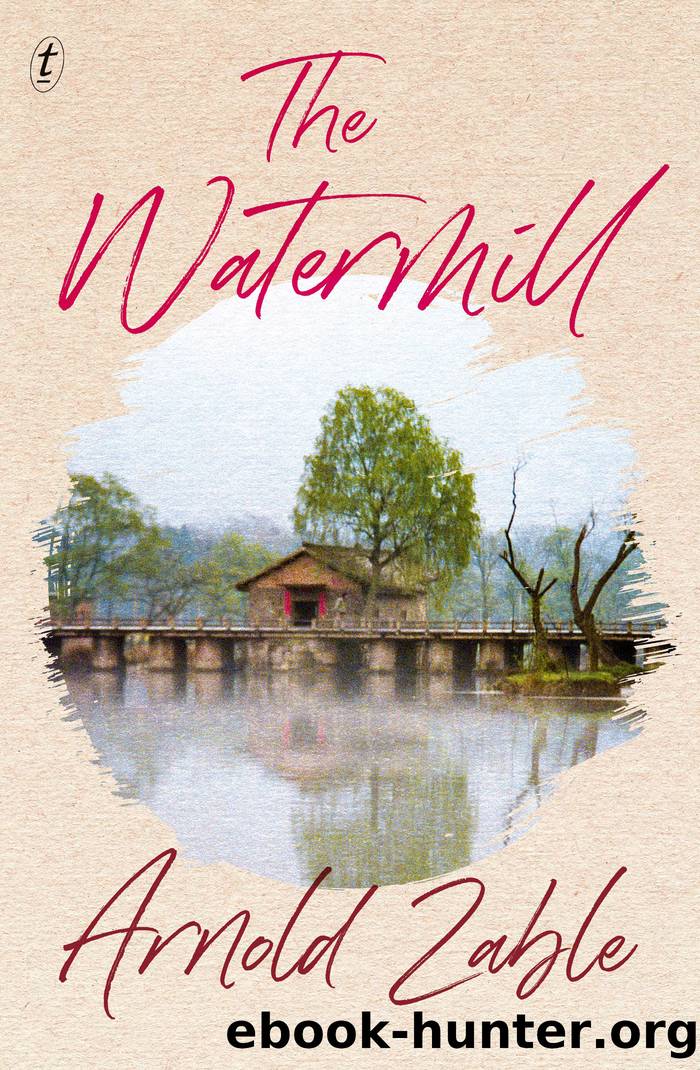The Watermill by Arnold Zable

Author:Arnold Zable [Arnold Zable]
Language: eng
Format: epub
Publisher: The Text Publishing Company
Published: 2020-01-18T00:00:00+00:00
How do we do justice to a life? The dead cannot speak for themselves. Long after Sonia’s death, it is a thought that haunts me. There are many gaps in Sonia’s story, missing pieces. Who was she in the prime of her life? And in her partnership with Sami? How were they as a couple? What drove them apart? How did they appear to others who knew them?
In January 2017, I received an email from Arie Olewski. We had never met or been in contact. He lives in Herzliya, a coastal city north of Tel Aviv. He had read a tribute I had written to Sonia and he wished to publish it in a journal dedicated to the memory of Bergen-Belsen survivors. Arie and his sister Jochi knew Sonia and Sami as a couple, and knew them well.
‘I grew up on their knees,’ says Arie. ‘They spent a lot of time in our home during their trips from Paris. But then Sonia vanished. I was about ten years old. I never saw her again.’
Arie was born in 1950 and Jochi in 1947. Sonia Boszkowska was their ‘Aunt Sonia’, he says, and Sami Feder, their ‘Uncle Sami’. Arie’s father, Rafael, was Sami’s best friend. The men met in Bergen-Belsen. They were brothers in displacement. When the Kazet Theatre embarked on its European tour, Sami handed over his role as director of the camp’s cultural department to Rafael.
‘Do you know,’ says Arie, ‘that the camp functioned as an autonomous state? A kind of republic. And that under the noses of the British military it became a self-governing system that looked after its people?’
I am taken by the idea: a republic of the stateless. With its elected leaders, political parties and governing officials. And a citizenry composed of the displaced—the broken in body and the wounded in spirit.
In the first year after liberation, there were more than a thousand marriages, a response to the re-awakening of sexual desire and an urgent need for companionship. It was the main event, with up to fifty weddings a week. The grooms wore suits, and the brides wedding dresses, some made from parachutes. Apartment blocks were decorated and rations transformed into fine dishes. In that first year, there were more than five hundred births registered at the Bergen-Belsen hospital, and by 1948, more than a thousand.
‘In this cynical world we live in, many people cannot understand what the camp provided,’ says Arie. ‘And the theatre played a big role in this. I am familiar with the reaction of the audience. It was a great deed that Sami performed at that time. He was the right person in the right place doing the right thing.
‘My parents told me about the theatre when I was a young boy. They told me that Aunt Sonia was the leading performer and that Sami was the director. They told me everything, the good and the bad. I could not understand it all, but what they said made a lasting impression.’
I want to keep Arie talking.
Download
This site does not store any files on its server. We only index and link to content provided by other sites. Please contact the content providers to delete copyright contents if any and email us, we'll remove relevant links or contents immediately.
| Africa | Americas |
| Arctic & Antarctica | Asia |
| Australia & Oceania | Europe |
| Middle East | Russia |
| United States | World |
| Ancient Civilizations | Military |
| Historical Study & Educational Resources |
The Ratline by Philippe Sands(1510)
The Holocaust: A New History by Laurence Rees(1482)
The Diary of a Young Girl: The Definitive Edition by Anne Frank; Otto Frank; Mirjam Pressler(1275)
Anne Frank: The Diary of a Young Girl by Anne Frank(1222)
The diary of a young girl: the definitive edition by Anne Frank; Otto Frank; Mirjam Pressler(1202)
Eichmann in Jerusalem by Hannah Arendt(1128)
The Diary of a Young Girl by Frank Ann(1099)
Yes to Life by Viktor E. Frankl(1027)
The New York Times Complete World War II: The Coverage of the Entire Conflict by The New York Times(981)
Schindler's List by Keneally Thomas(931)
Frank, Anne - The Diary of Anne Frank by Frank Anne(872)
Clara's War by Clara Kramer(868)
Mengele by David G. Marwell(816)
The Pink Triangle: The Nazi War Against Homosexuals by Plant Richard(795)
And the Sea Is Never Full by Elie Wiesel(792)
My Grandfather Would Have Shot Me by Jennifer Teege(773)
The Master Plan by Heather Pringle(761)
All Rivers Run to the Sea: Memoirs by Elie Wiesel(745)
Return to the Reich by Eric Lichtblau(731)
